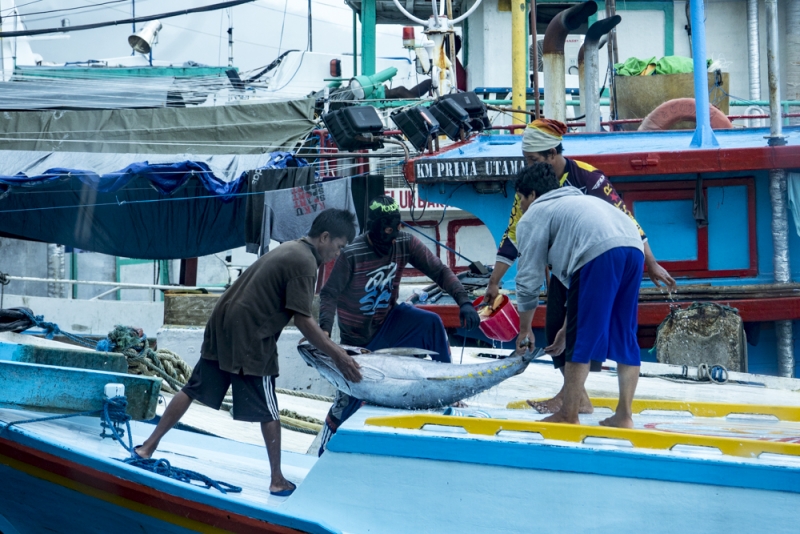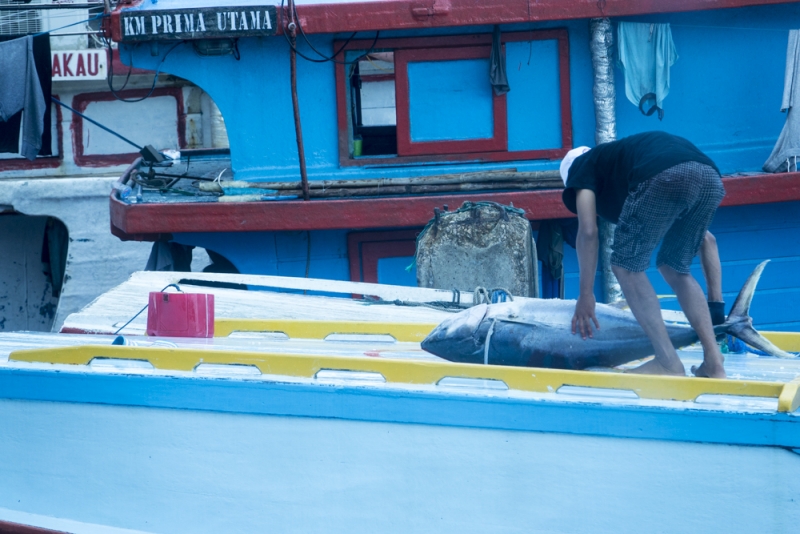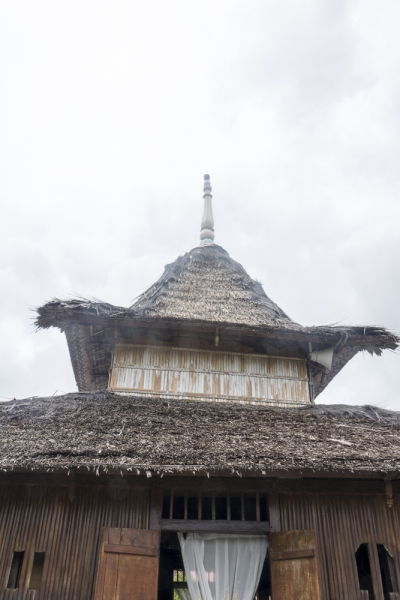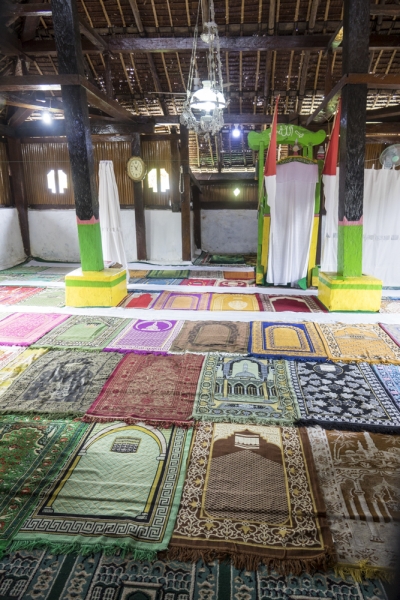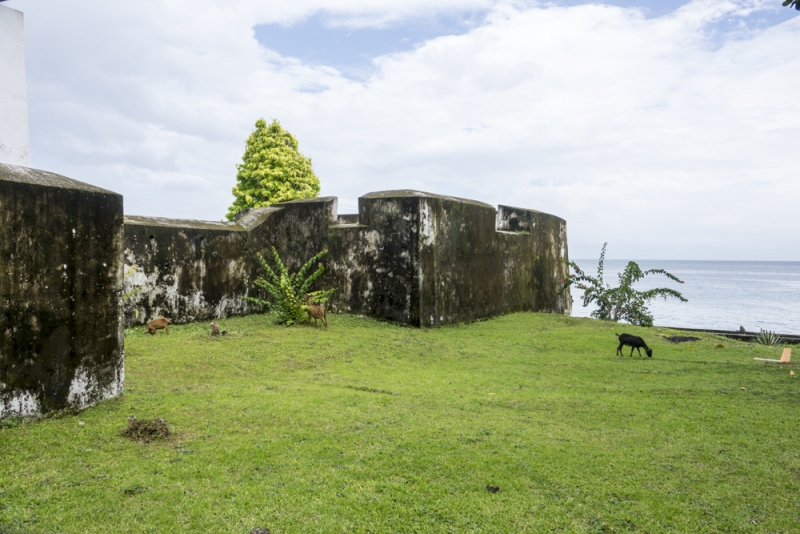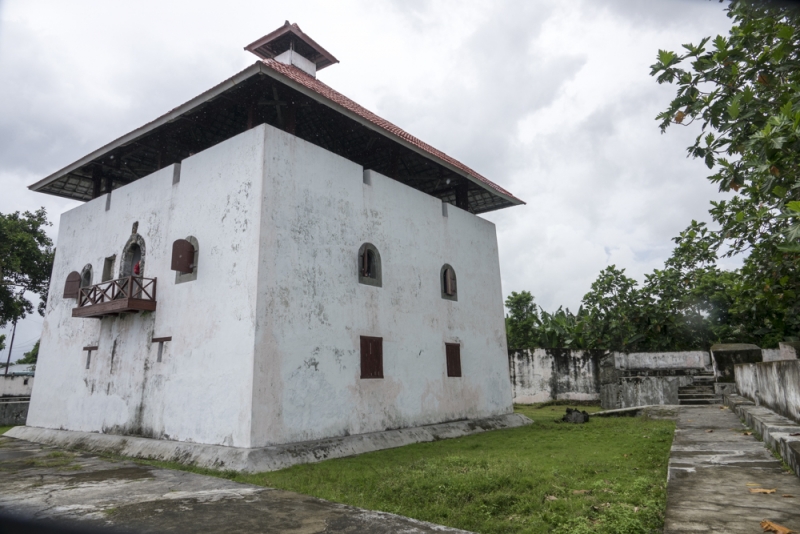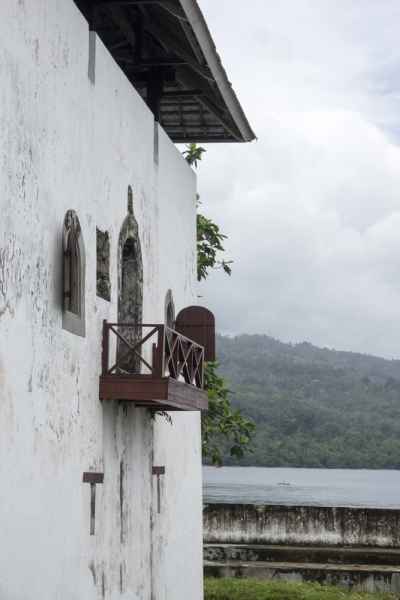It’s something of a struggle to find something positive to say about L’Austral’s visit today to Ambon. A sprawling regional centre, it is overcast and gloomy on arrival. It’s a wet zodiac ride in the rain and wet landing in Ambon Bay into filthy, rubbish-strewn water. A fleet of buses is waiting to take us to Fort Amsterdam, and a historic 15th-century mosque. The original plan was to also visit a village, but heavy rain has eroded the access road, so we’re on Plan B. More rain is forecast, with a top temperature of 28⁰C this afternoon.
Ambon seems to be a fishing port, as seen by the photo below of yellow-fin tuna being unloaded from a small fishing vessel.
It’s a long 80-minute bus ride to reach the mosque and the 17th Century Fort Amsterdam, which are within walking distance of each other. The local guide is excellent, and teaches at the local school (it’s Sunday, so he’s working on his day off).The mosque has been relocated several times over the centuries, and visitors are allowed as far as the doorway to photograph the interior. The mosque also seems to have a Western-style toilet, which makes it very popular with some of the visitors.
A short walk takes us to Fort Amsterdam, an old Dutch fort. Smaller than Fort Nassau on Banda Neira, but in better condition, the highlight is the local choir performance that takes advantage of the acoustics of the building.An hour after arriving, it’s another bus ride back to the landing site. Ambon is a study in contrasts – a modern 2-story KFC next to a series of churches, and the quality of buildings varies dramatically. Some houses appear to be well-constructed, while others look like they would be washed away with some heavy rain. The low-lying areas all have signs designating the tsunami evacuation route to follow.
All in all, I wonder about the rationale of stopping in Ambon. Whilst the choir at Fort Amsterdam was excellent, the fort and mosque really aren’t worth a nearly 3-hour return trip.

